Apple unveiled its long-awaited AR/VR headset dubbed Apple Vision Pro at WWDC 2023, looking to take the AR and VR markets by storm with a ludicrously premium design, top-end hardware and Apple’s signature software experience.
The headset is designed to bring your favourite iPhone apps to the real world, overlaying digital content into your surroundings and boasting a few genuine firsts like EyeSight, a novel way for people to see the user’s eyes even when wearing the headset, and controller-less input using voice, eyes and hand gestures.
It was an exciting announcement, but then the company said practically nothing about the headset for six months. However, fast forward to January 2024, the company has confirmed that the Vision Pro will be released in the US in the coming weeks – though there’s still no word yet on a wider release.
Here’s everything there is to know about the Apple Vision Pro, from release date and pricing to the key features of Apple’s AR headset.
When will Apple Vision Pro be released?
Apple teased at the Vision Pro’s WWDC 2023 reveal that it’d be available to buy first in the US in early 2024. Apple then confirmed that the Vision Pro will be available to pre-order from 19 January 2024 at 8am ET, with release set for 2 February 2024.
There’s no word yet on when or if the headset will come to other territories, but it will likely make its way to the UK, Europe and other countries in due course.
How much will Apple Vision Pro cost?
This one’s the kicker, especially if you were hoping for something that cost a similar amount to Meta’s affordable Quest 2 headset, with Apple’s Reality Pro headset priced at an eye-watering $3499 making it the most expensive consumer-focused standalone VR/AR headset on the market in 2023, beating even the pricey £999/$999 Meta Quest Pro and £1299/$1099 HTC Vive Elite XR headsets.
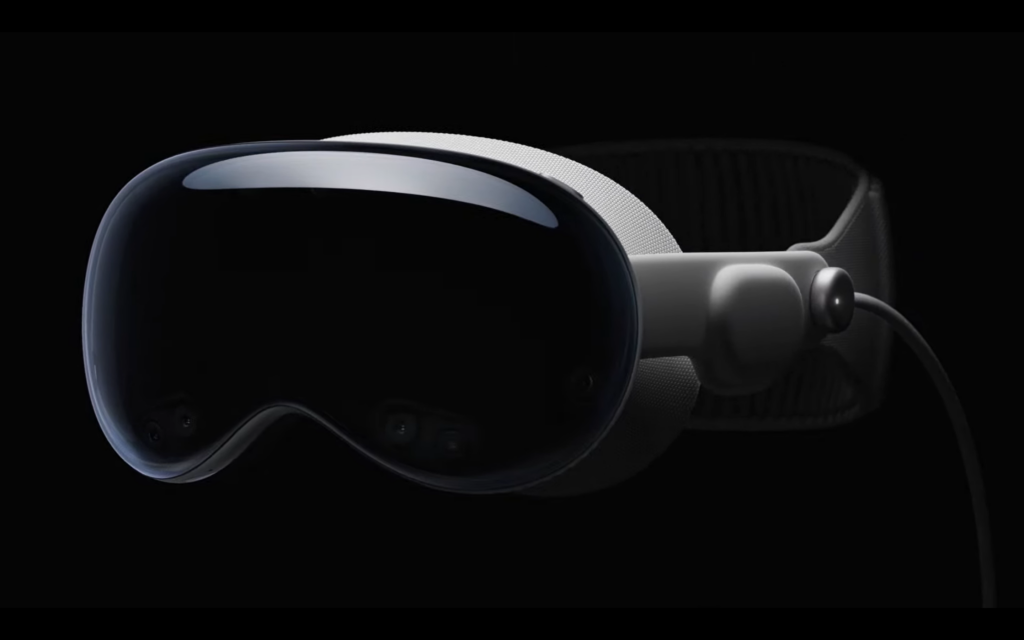
Apple Vision Pro design & features
Apple’s Vision Pro has one goal in mind: to introduce you to the world of spatial computing, essentially blending the real and virtual worlds into one. It allows you to run your favourite iOS apps on huge floating screens in the real world, complete with shadows to help them look more real, as well as immerse yourself in 3D content, movies and your favourite games, all without the need for a PC or Mac.
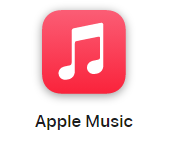
Apple Music
Apple Music gives you access to over 100 million songs and 30,000 playlists, ad-free. Listen online or off, across all your devices, and hear sound all around in Spatial Audio with dynamic head tracking. You can now try 1 month for free!
- Apple
- Get 1 month free
- £10.99 p/m
Lightweight design
Apple Vision Pro looks to be a true next-gen AR/VR headset with not only a much more slimline design than many competing all-in-one headsets like the Meta Quest Pro and Vive Elite XR but with a better display, more processing power and Apple’s signature software design.
First off, the Vision Pro is the most lightweight, slimline VR/AR headset we’ve seen so far, sporting a rather unique look that looks more like ski goggles than the likes of the Quest 2.

As well as sporting a look designed to fit the curvature of your face naturally, there’s plenty of swappable padding to perfect the experience. There are also flexible straps that conform to the shape of your head, as well as a 3D-knitted headband that Apple claims to provide great movability and stretch compared to more rigid headsets on the market.
Along with a stylish, lightweight design, the Vision Pro has two micro OLED panels that are barely the size of a postage stamp while still managing to deliver 23 million pixels between them – more than 4K for each eye. That’s backed by a custom three-element lens that Apple claims to deliver a wide FOV and impressive clarity, with users able to view true 4K footage in-headset.
Apple stayed tight-lipped on specs like refresh rate and FOV at the reveal, so there’s still plenty more to find out about the headset.
EyeSight technology
While the general design is impressive, it’s the front of the headset that steals the show; it sports a polished glass surface with a wide array of cameras and sensors found within, with that glass front disappearing into the curved aluminium frame. Not that you’d be able to tell by looking at it, but there’s also a flexible OLED panel within the headset with a specific purpose: EyeSight.
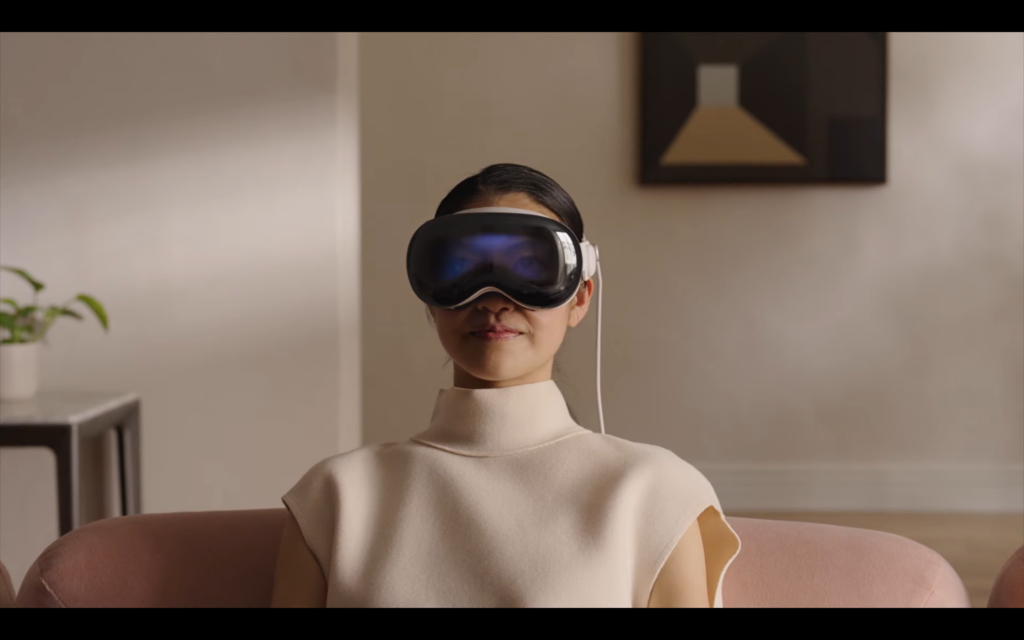
Apple’s proprietary tech essentially looks to bring back the human connection, even when wearing a headset, by projecting your eyes onto the outside of the device. This allows people in the room to see your eyes as they chat to you as you wear the headset, with the user also able to see the face of others in the room appear within the virtual realm – no more sneaking up on VR gamers as they flail their arms around!
Eyes, hands and voice control
Unlike most other VR headsets on the market right now, Apple is going all in on eye-tracking, hand-tracking and voice control for the Vision Pro headset. Sensors within the headset can detect where you’re looking and can use that information to select UI elements, while a quick tap of the fingers allows you to select and open apps.
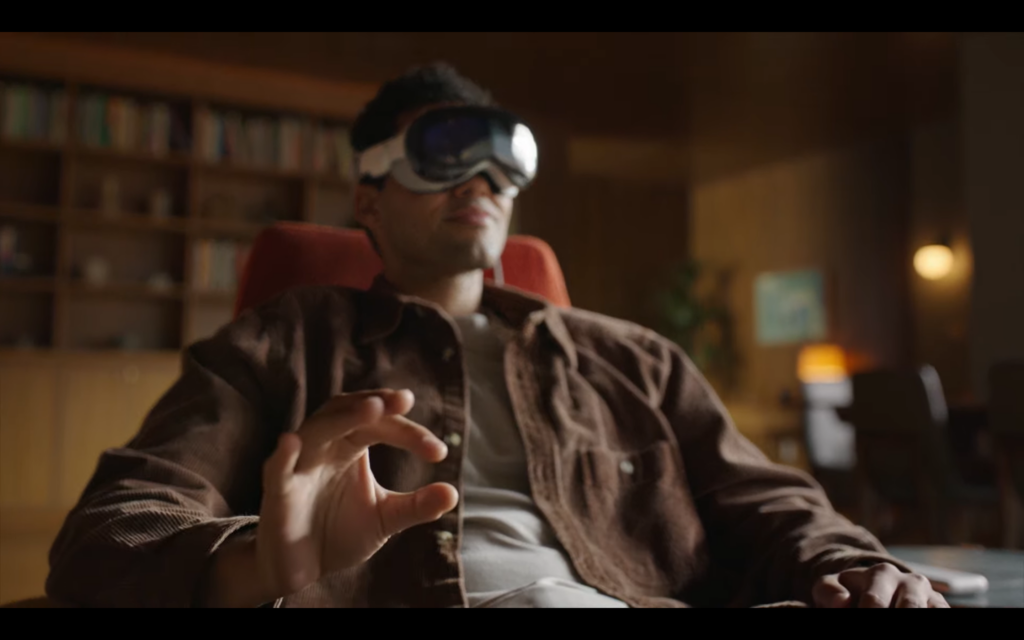
You can also use the power of Siri to perform actions like open apps, start FaceTime calls and even dictate replies to messages.
If you feel a little uncomfortable with the idea of dictating long personal text messages or emails, you’ll be glad to know that it also supports Bluetooth accessories like the Magic Keyboard and Magic Mouse – ideal for productivity.
M2 and R1 chipsets
The Apple Vision Pro headset is powered not by one but two chipsets: Apple M2 and the new Apple R1 chipset. The former is what allows the headset to deliver such a high-quality, high-res experience while the latter is essentially designed to reduce the amount of lag between the various sensors and what you see in the headset.

Apple claims that the R1 chipset handles input from 12 cameras, 5 sensors and 6 microphones simultaneously for a rapid 12ms response time – 8x faster than the blink of an eye, according to the company.
iPhone apps in the real world
One of the key features of the Vision Pro headset is to run your favourite iOS apps in the real world, with Apple confirming the existence of several apps including Messages, Safari, Mail and FaceTime, as well as the ability to play Apple Arcade titles in AR.
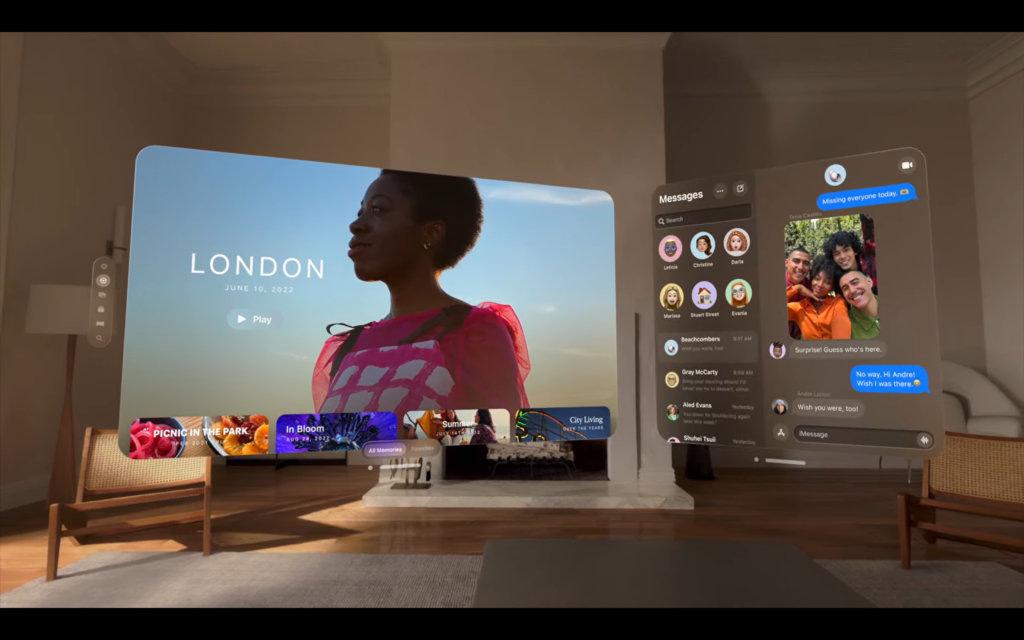
We assume there will be a healthy dose of third-party apps available next year once the headset finally ships.
You’ll also be able to wirelessly mirror your Mac display to the headset, allowing you to do more complex tasks like edit in Final Cut Pro on a large virtual display, or possibly even several displays, depending on your workflow.
Digital Crown to control immersion
Apple’s Digital Crown is rather versatile; as well as being a key feature of the Apple Watch, it has made its way to the AirPods Max and, now, the Vision Pro headset – though it has a slightly different function here.
While you can still use the digital crown to control audio output of the headset, it’s also designed to be used as a slider to adjust the level of immersion within the headset. By default, the headset will display a colour passthrough view of your environment, allowing you to run iPhone apps in your physical space.

That’s pretty cool, especially for work and productivity, but what if you want to watch a movie on Disney Plus? The company confirmed that the streaming giant would be available from day one, after all.
Apple’s alternative is for users to twist the dial and adjust the balance between the real and virtual worlds, helping you find the right balance for your needs, be it complete virtual immersion or a real-world border to keep you oriented in the physical space.
Two-hour battery life
The Apple Reality Pro headset sounds like a capable (and extremely expensive) AR/VR headset, but there is one catch; battery.
You see, to keep the headset as lightweight as possible, Apple removed the battery from the headset itself, instead opting for a small battery pack that connects to the side of the headset with magnets. That’s fine – it’s only a relatively thin cable – but the issue is that the connected battery pack only provides two hours of use. That’s not great if you were planning on using the headset as a laptop replacement as Apple hints.
There are a couple of alternatives – you could buy a second battery pack and swap it out once the first dies, or you could connect directly to a wall charger – but neither are ideal for a headset that comfortably costs triple the amount of some of the most premium AR/VR headsets around right now.

Apple Music
Apple Music gives you access to over 100 million songs and 30,000 playlists, ad-free. Listen online or off, across all your devices, and hear sound all around in Spatial Audio with dynamic head tracking. You can now try 1 month for free!
- Apple
- Get 1 month free
- £10.99 p/m











